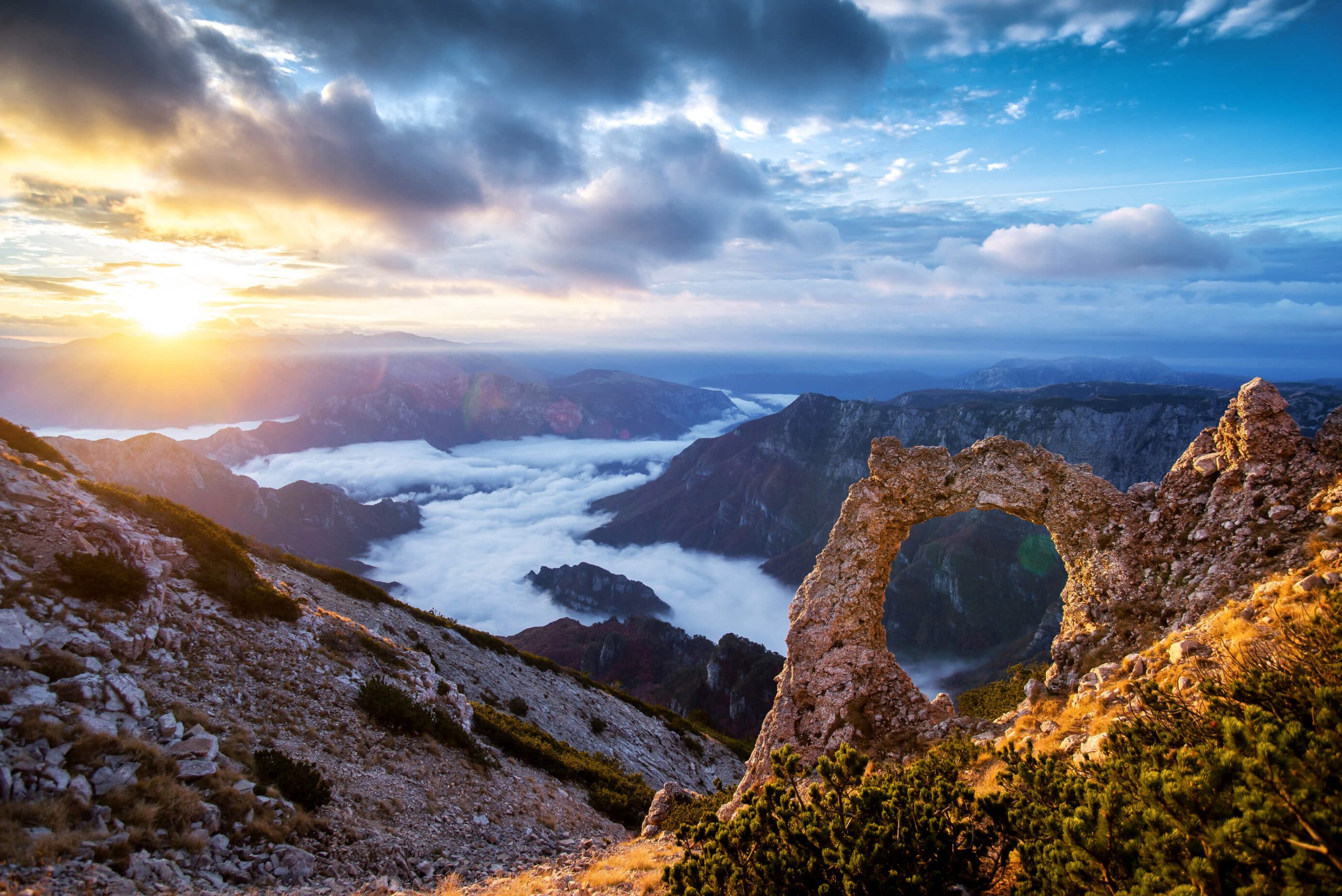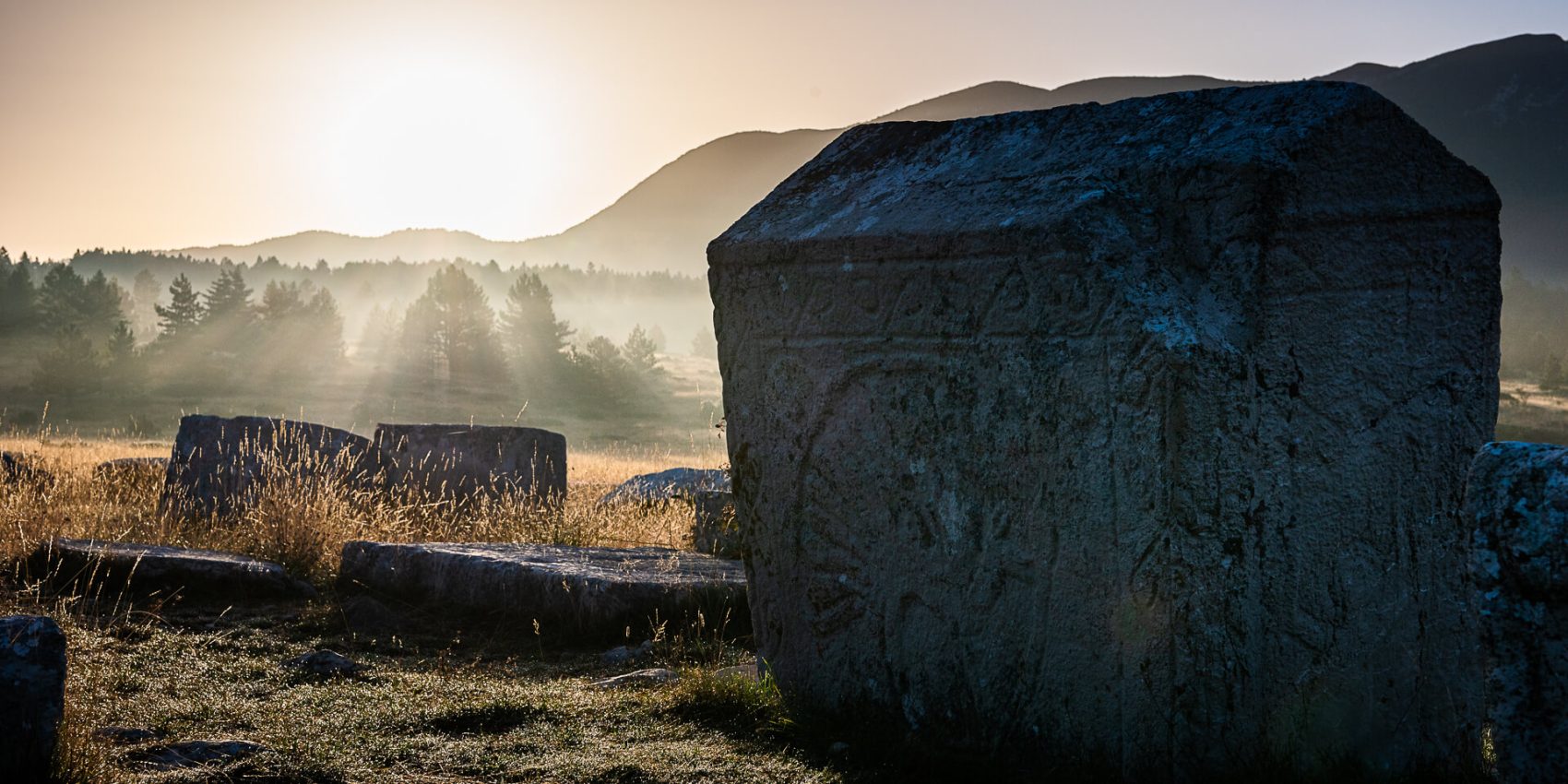
Blidinje Through History
Home
Blidinje Through History
22/02/2024• •
History and myths of Blidinje Nature Park
As perfect and unique as the nature of Blidinje is, and as beautiful and pleasing to the eye it may be, there are also special, beautiful, and ear-pleasing stories from ancient and forgotten times that relate to this region.
Blidinje Nature Park is rich in historical events, best illustrated by individuals who have dedicated their lives to this beautiful mountainous region. That’s why we have our guides who recount every story, fact, myth, and legend from this area to visitors, enriching their stay here with even more unforgettable experiences.
For centuries, the mountain gorges and canyons have echoed the cries of once mighty hajduks who carved their pride and vengeance against the Turks and their pashaluk in the Čvrsnica and Vran mountains. Many conflicts between hajduks and Turks took place on Blidinje’s grounds, with the high and mighty mountains serving as a safe haven for the hajduks. A memory of that time are Hajdučka Vrata, also known as Mijatov Prolaz, named after the folk hero, hajduk Mijat Tomić. Men who would join him in the fight had to go through the stone circle of Hajdučka Vrata to make themselves bulletproof. Mijat Tomić and his group dwelled in these mountains, and at the foot of Vran, near the Hajdučke Vrleti restaurant, lies Mijatova Pećina (Mijat’s Cave). Up on the summit of that mountain is also Mijatova Gornja Jama (Mijat’s Upper Cave).
In addition to the fearless hajduks, one beautiful girl named Diva left her life story in Blidinje for her Christian faith. As she refused to marry a Turk, and because he did not accept “no” as an answer, her life ended at the foot of Vran Mountain, at a place called Kedžara. At the site of her tragic death stands a stećak (medieval tombstone) and a stone altar used for Holy Mass. In order to confirm the fact that the remains of Dive Grabovčeva (Diva of Grabovica) lie there, historian Ćiro Truhelka once excavated the grave and confirmed the thesis that a young girl of extraordinary beauty rests there, indicated by the contours of the skull.
The stone sleepers, better known as stećci, are another ornament of Blidinje Nature Park. Spread across several locations within the park, one of the necropolises has been included into UNESCO’s list of cultural heritage. They are silent witnesses to past and long-finished times that not even cruel weather conditions could erase from Blidinje. The carved figures on these stone sleepers tell interesting stories best retold by our guides.
In addition to all the facts, legends and myths also play a significant role in the overall understanding of Blidinje Nature Park and how it was formed and shaped. For instance, there’s a legend about the origin of Blidinje Lake, which says it was created after women turned two brothers against each other. Another interesting legend is about Jedinica, a young girl who met a tragic fate at one place within the park.
Looking at old Austro-Hungarian maps of this area, you can see how shepherds used to lead their livestock to pasture through the highlands of Čvrsnica. Thus, at altitudes over 1500 meters above sea level, remains of shepherd settlements with enclosed springs and cisterns can be found.
You can experience firsthand how shepherds lived and prepared their food by visiting a rural household in Blidinje and having their traditional lunch. Additionally, there is a restaurant in Blidinje whose interior exudes Blidinje tradition. Hajdučke Vrleti restaurant serves as a sort of museum where visitors can see objects used by the inhabitants of these areas in their daily lives, which are rarely seen elsewhere today.
All this data is just a drop in the ocean of history waiting to be explored and learned by all tourists who, in addition to enjoying all the natural blessings of this region, also want to learn something new about the place they are visiting and enjoying so much.
Magical landscapes of Blidinje Nature Park
Association “Visit Blidinje”
+387 63 428 308
info@visit-blidinje.com
Masna Luka bb
88 245 Rakitno, Posušje, BiH
ID broj : 4272375500005
Raiffeisen Bank d.d. 1610000125610064

